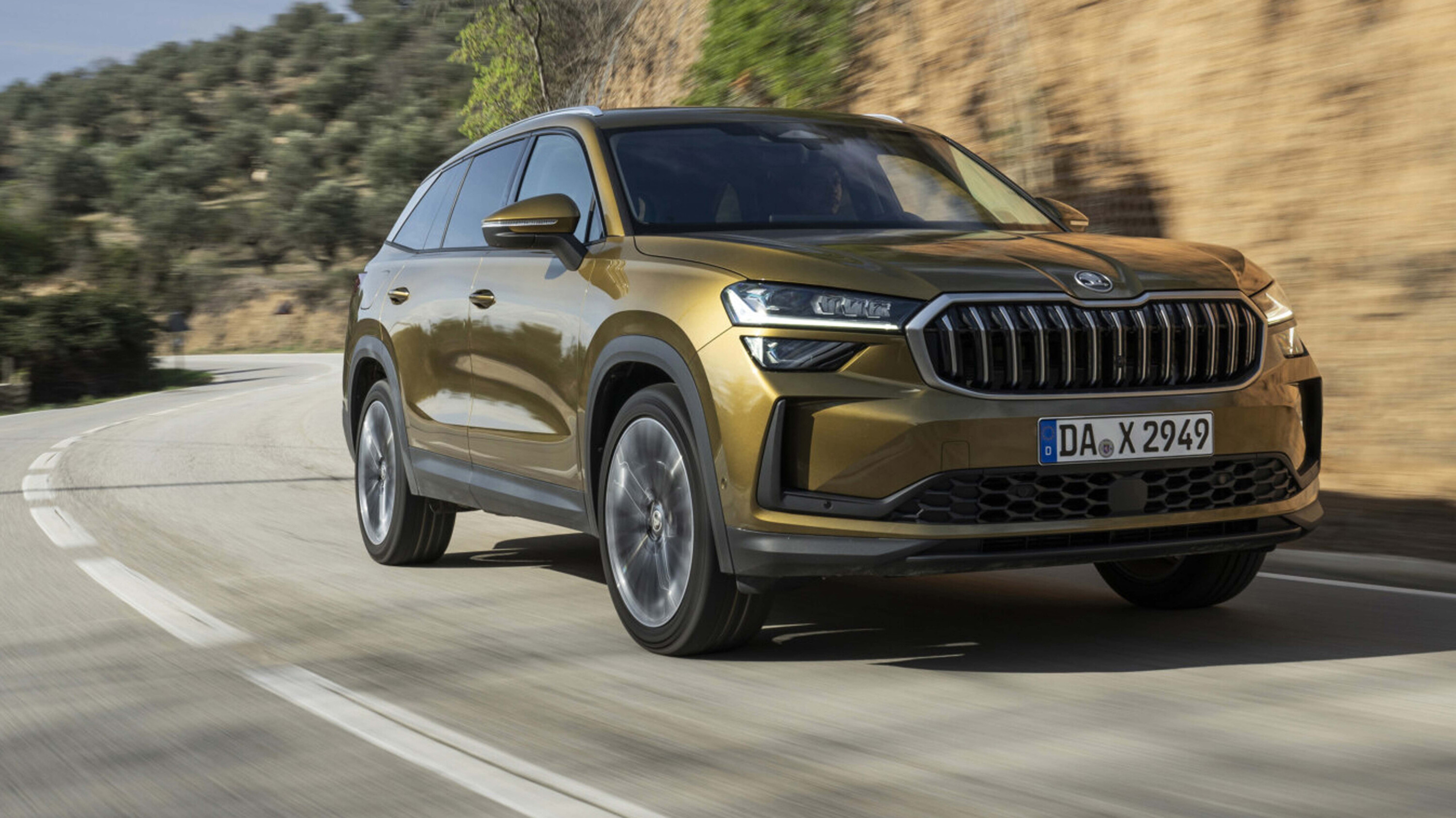Things we like
- Balances comfort and practicality with aplomb
- Strong powertrains and tidy handling
- Quality and ambience climb with new materials
Not so much
- Limited Aussie engine options
- Arguably fussy styling details
- Prices will inevitably rise
JUMP AHEAD
- Is the 2025 Skoda Kodiaq a big deal?
- Time to protest the local dealer?
- Is it exclusively DSG now?
- Is it still absolutely massive?
- Does it feel good inside?
- Is it worth waiting for the 2025 Skoda Kodiaq?
Is the 2025 Skoda Kodiaq a big deal?
Yup. This is the new Kodiaq, the difficult second album after a blockbuster debut.
Not only has its forebear shifted over 800,000 units globally, but it’s perhaps the clearest example of Skoda’s rise to popularity.
A supremely talented family car that cohesively blends neat dynamics, smart materials and shedloads of space. Not to mention one of a small band of alluring seven-seaters on sale.
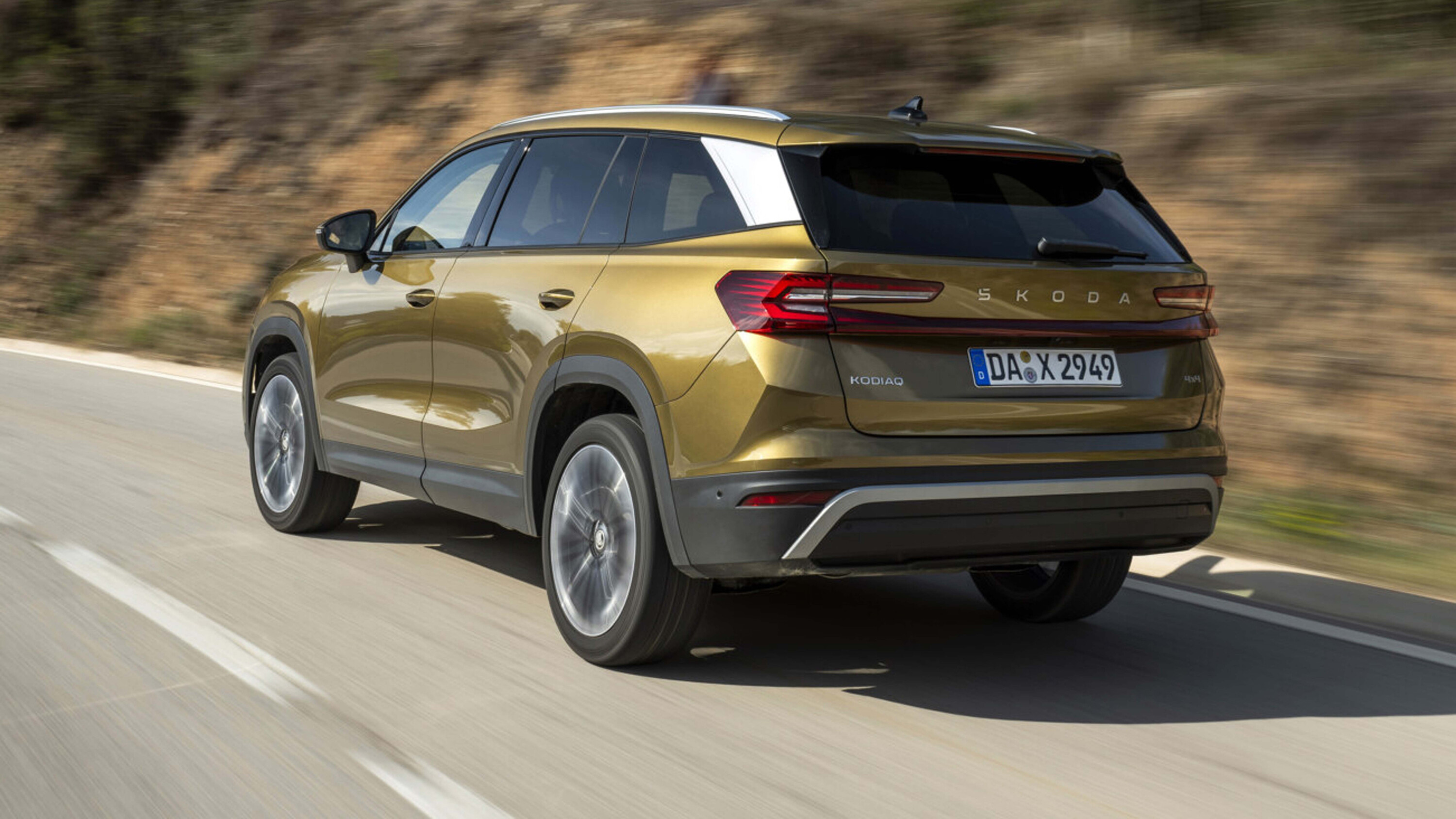
You wouldn’t blame Skoda for deploying a modest facelift and declaring this a new car, afraid to mess up a good thing.
Indeed, for all the talk of a new ‘Modern Solid’ design language, its bold wraparound taillights and a new iteration of the Skoda badge, it keeps the general Kodiaq aesthetic and adorns it with extra tinsel.
There’s a fresh dose of electrification too, most notably the first plug-in hybrid Kodiaq, though pure petrol and even diesel remain on the configurator. Aussie buyers are initially limited to one engine, mind – a 150kW 2.0-litre TSI petrol with all-wheel drive.

Time to protest the local dealer?
Not yet. This TSI engine feels like the current pick of the range and ought to provide more than enough flexibility to haul the family around without fuss – then go like a modest hot hatch once the kids are dispatched at the school gates.
The PHEV also scores well. Its 19.7kWh battery yields around 100km on electric power alone while the e-motor and 1.5-litre TSI work amicably together in most driving situations, the engine’s occasionally gruff nature at higher revs does encourage prudent rather than pushy acceleration.
It’s front-wheel drive only and uses a six- rather than seven-speed DSG, but unless you’re truly going to take it off road, you’ll not care.
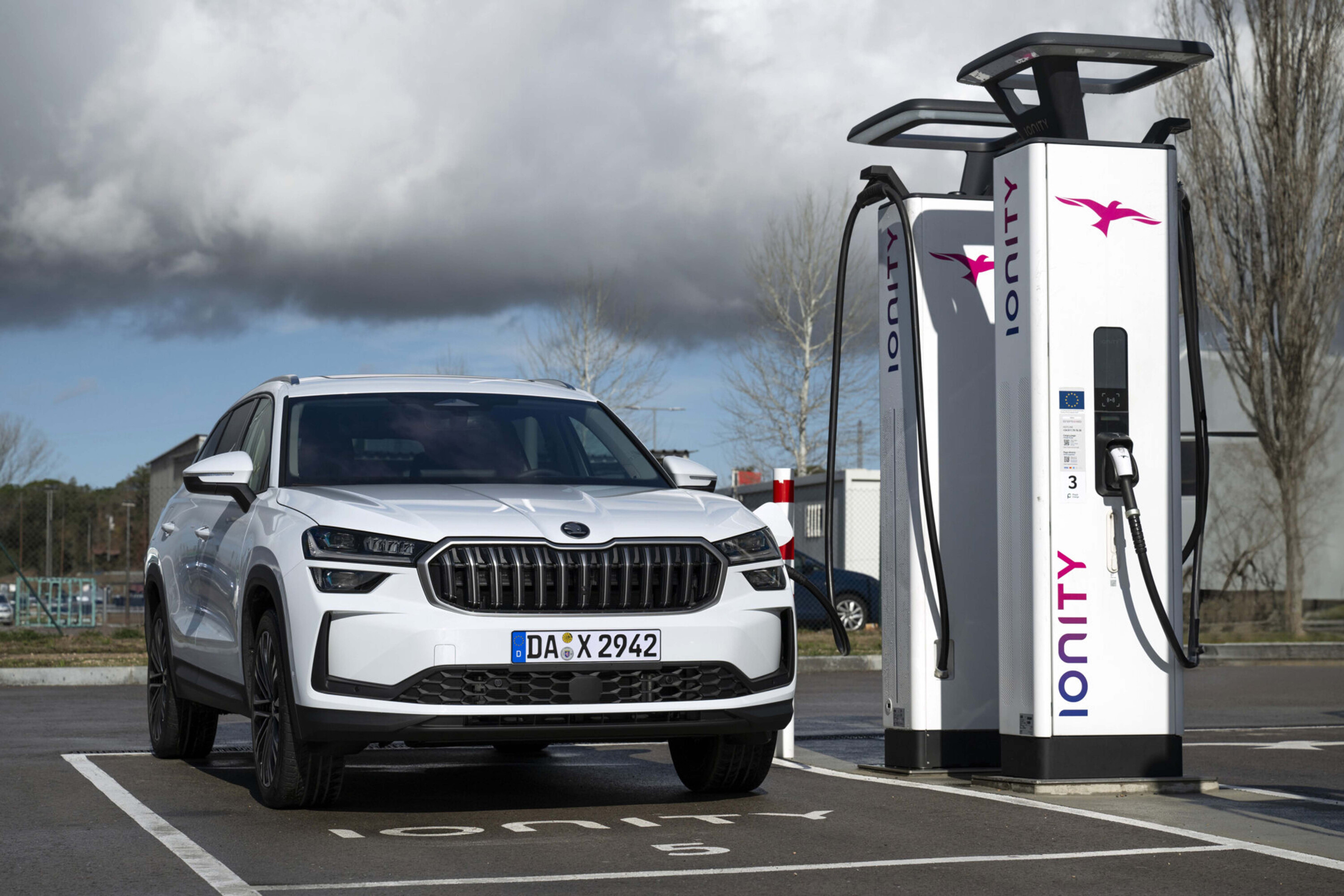
Handling is smart across all iterations, Skoda allowing the Kodiaq to naturally roll and lean a little in corners to take tension out of the whole chassis (take notes, VW).
This rides as comfortably as an SUV should, in summary, while retaining decent grip and faithful responses. Opt for the PHEV and you’ll notice its extra few hundred kilos, but the car isn’t hamstrung by them.
DCC+ chassis control lies on the options list and Skoda expects around a third of buyers to go for it. It brings 15-stage adaptive damping as well as a mixture of different drive modes for steering weight and engine response.
Don’t spec DCC+ and you can’t adjust anything at all – a cost-saving measure, or Skoda appreciating most people don’t bother – yet the Kodiaq still steers with clarity and rides as well as you’d hope.

Is it exclusively DSG now?
Correct. Like the Tiguan, this is an auto-only zone, with the designers leaping on an opportunity to mildly revolutionise the interior.
The gear selector moves up to the steering column allowing more of Skoda’s trademark cubbyholes to grace the centre console, with a pair of ventilated wireless phone charging pads primed and ready to stop your precious device cooking.
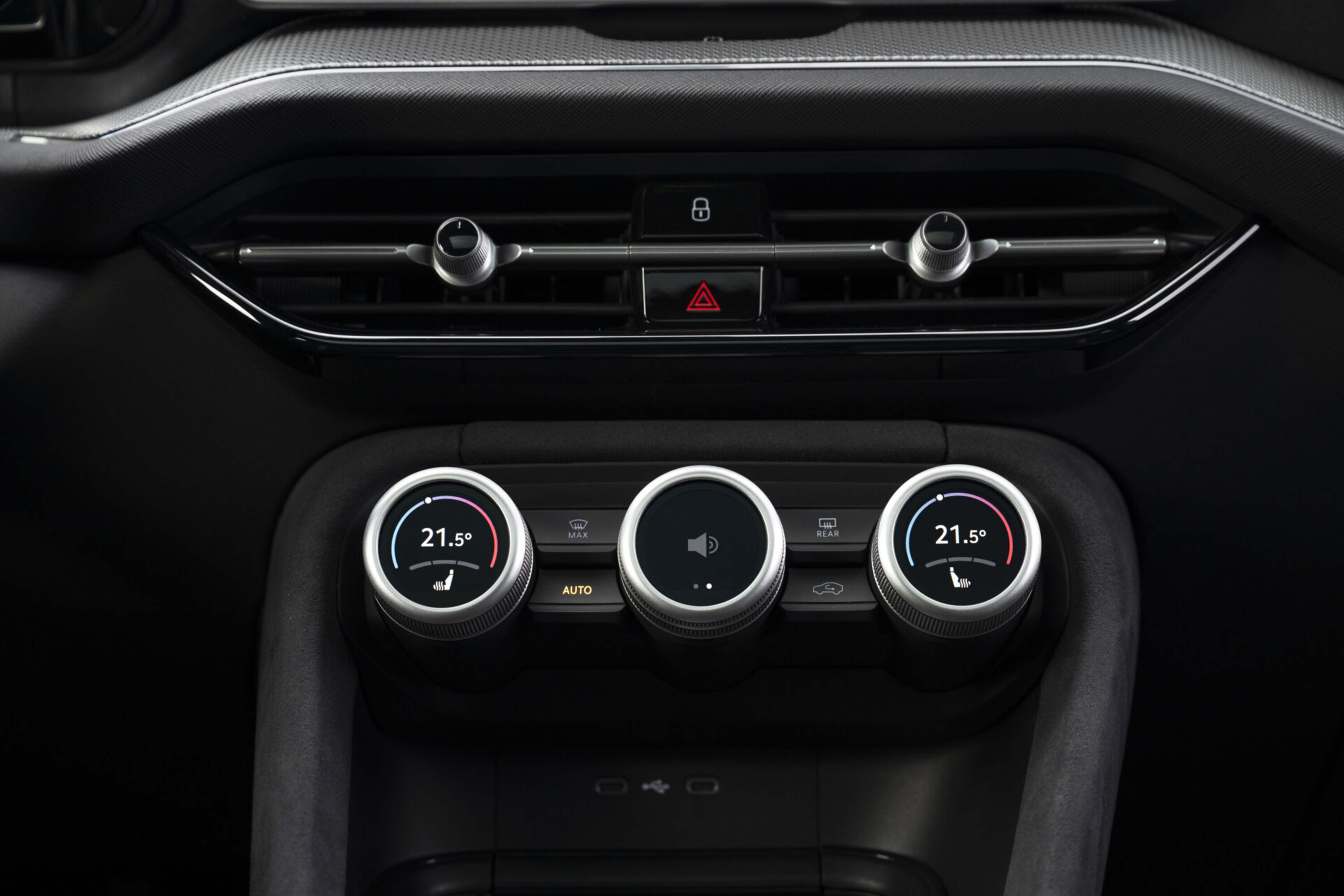
Most exciting is a row of three ‘smart dials’ which blend digital and physical realms to cycle between volume, driving modes or – hurrah! – the climate control.
The interior looks as digitalised as any other new-gen VW Group product, but Skoda’s not forgotten to bake in some good old-fashioned pragmatism.
They operate brilliantly – making zooming in and out of maps especially easy – and really put some distance between this and its Tiguan cousin. Though the Kodiaq really seals the deal as you head towards the other end of the car…
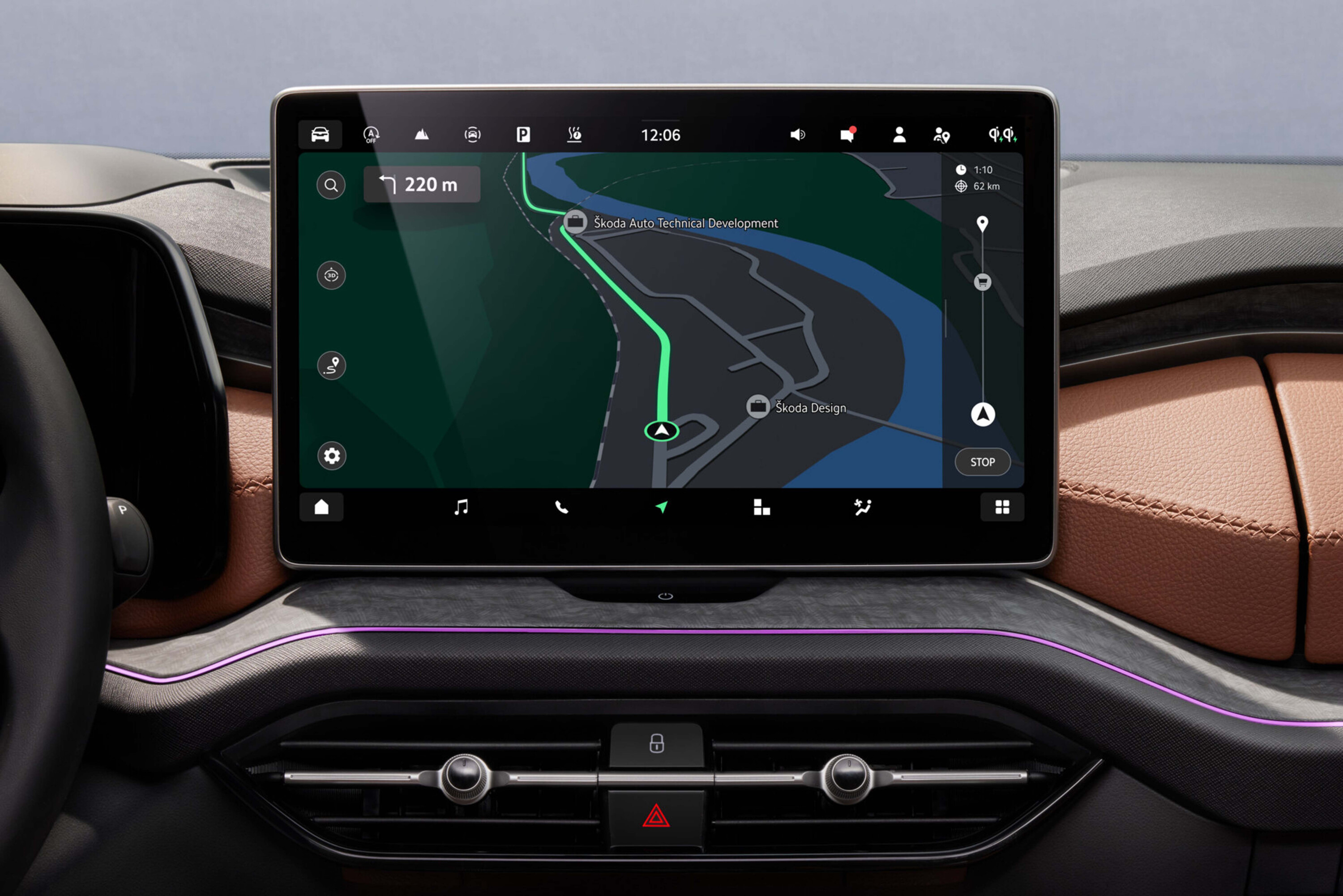
Is it still absolutely massive?
In exterior dimensions alone, Kodiaq gen2 isn’t much bigger than before, while the wheelbase is unchanged.
Yet headroom has been increased across every row of seats, most notably for the rearmost pair which should prove a bit more flexible than before. Another 70 litres of boot space ensures the 340-litre capacity behind row three now rivals a Golf.
In five-seat mode you’ll get around 900 litres and over 2,000 litres with the middle row flipped. Crikey.
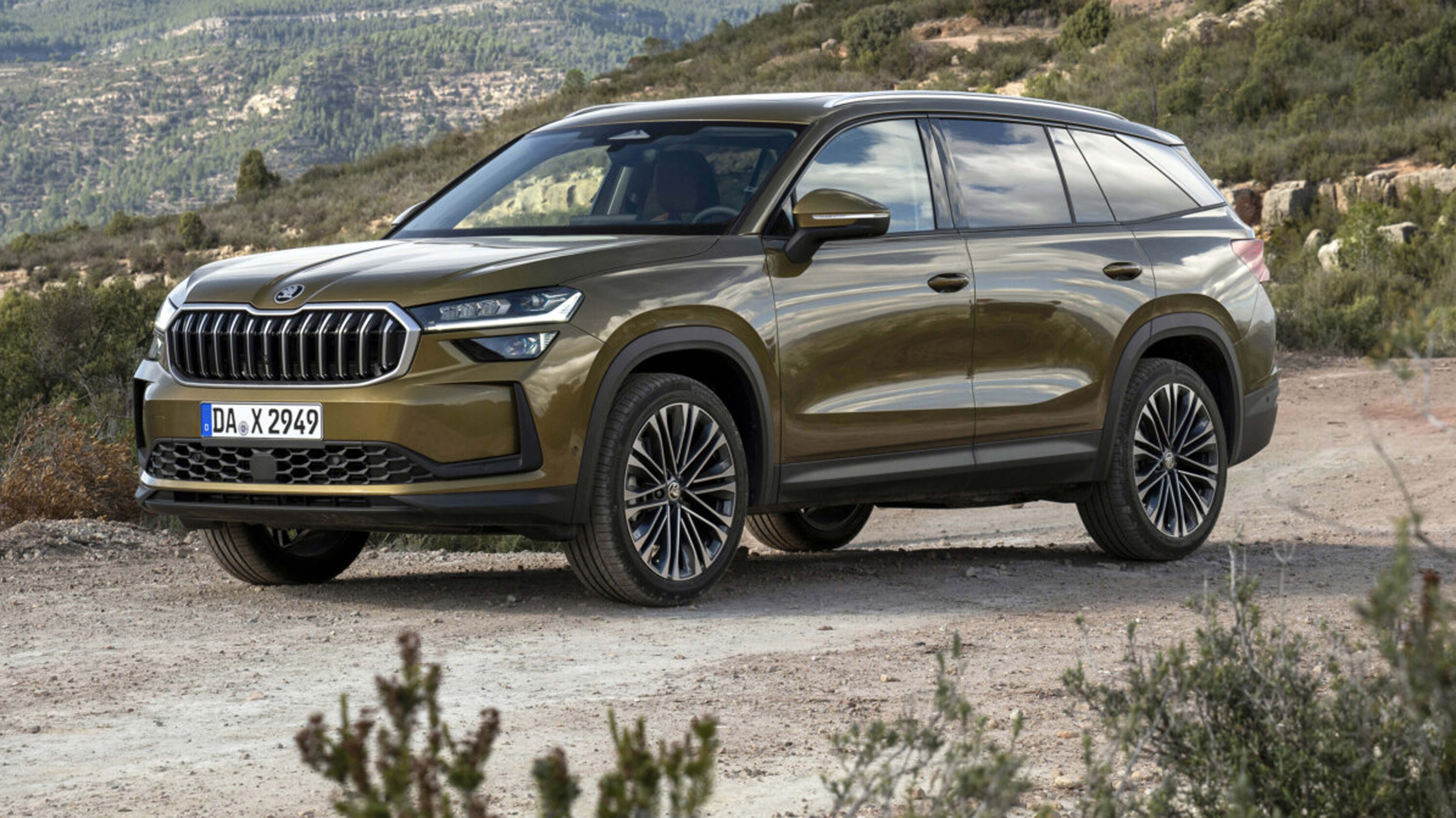
The PHEV takes a small chunk out of those latter figures and can’t be optioned with seven seats thanks to the location of its battery. For now, that’s of no concern to Aussie buyers.
A 13-inch central touchscreen complements 10-inch digital dials as standard and offers reasonably smart shortcuts to the most pressing features, though it’ll occasionally scold you for not looking hard enough at the road even if you’ve flicked your eyes away only briefly.
While the Tiguan offers up to 15 inches, you really don’t need a screen bigger than Skoda’s. A head-up display is optional for the first time.
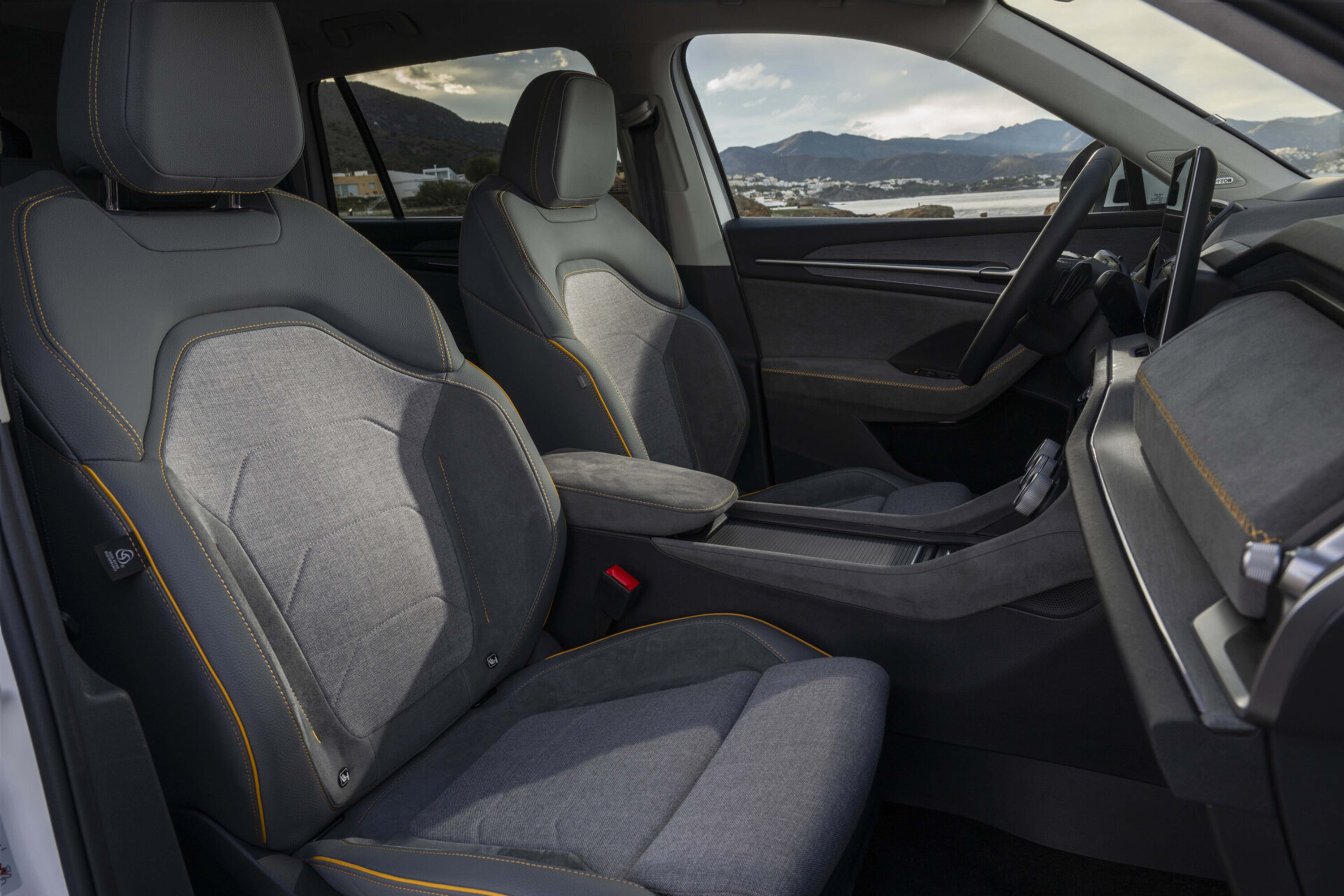
Does it feel good inside?
The Czechs have gone big on sustainable materials, with numerous fabrics adorning the seats, doors and dashboard fashioned from recycled plastic bottles.
Opt for leather and its tanning process has been done via coffee bean waste rather than nasty chemicals.
Instead of plunging the interior back into the prosaism of Skodas past, though, it lifts the atmosphere further. These materials look cool, feel intriguing and bring a fresh ambience. Skoda has produced quality interiors for years, but they sometimes fall into the trap of feeling somewhat dark and plasticky.
Tick the right spec boxes and it’s a lot airier in here and optional massaging seats lift the mood even further. A slipperier aero profile also aids refinement; this is a hushed environment at motorway speeds.

Is it worth waiting for the 2025 Skoda Kodiaq?
You can’t go far wrong with the outgoing car, and we’d not blame you for leaping on any discounts as it heads towards retirement.
The neatest trick of Kodiaq gen2 is that it moves the game on just enough without messing up the formula. It’s a triumph of evolution over revolution, even if there’s a host of new tech, sustainable materials and a hybrid powertrain on offer.
Perhaps a more interesting question is if it’s worth waiting for the Kodiaq RS; Skoda has confirmed its new performance SUV debuts at the end of 2024, with the punchier powertrains of the Tiguan likely to ally to more assertive styling and black detailing in place of the shiny silver chintz of this base Skodiaq. It’s unlikely to be cheap, but it could prove the ultimate all-round family shuttle.
Things we like
- Balances comfort and practicality with aplomb
- Strong powertrains and tidy handling
- Quality and ambience climb with new materials
Not so much
- Limited Aussie engine options
- Arguably fussy styling details
- Prices will inevitably rise
We recommend
-
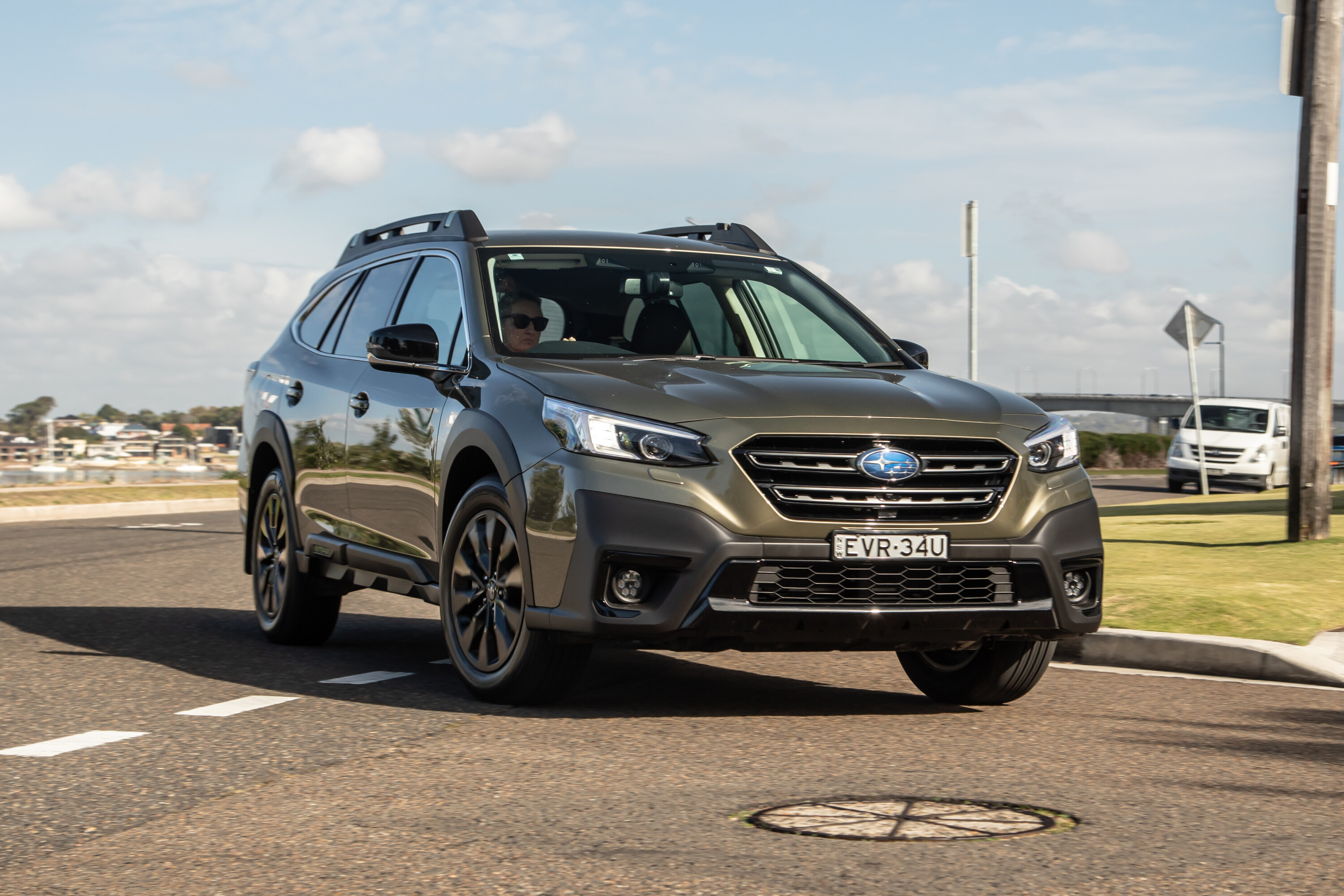 Reviews
Reviews2024 Skoda Kodiaq Sportline: Quick Review
If the RS pricing is too far out of reach, the Sportline might work perfectly for you
-
 News
News2024 Skoda Kodiaq pricing and features
Ahead of its 2024 replacement, the current seven-seat Kodiaq gets more safety gear
-
 News
News2025 New Car Calendar: All the new cars coming to Australia
Take a look at our list of what is expected to launch in Australia in 2025 – plus those we might not see locally just yet

